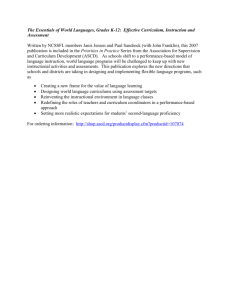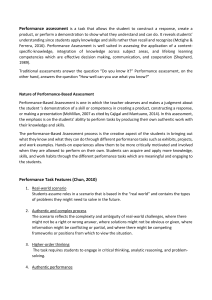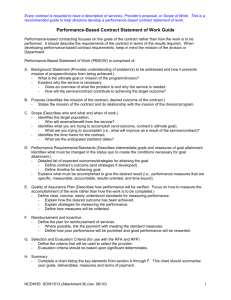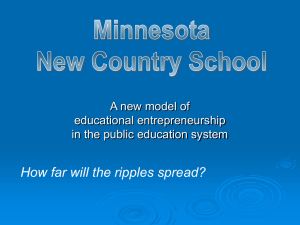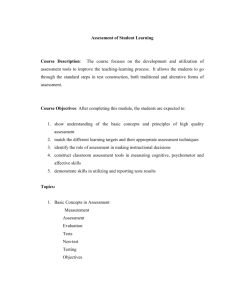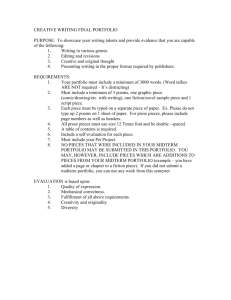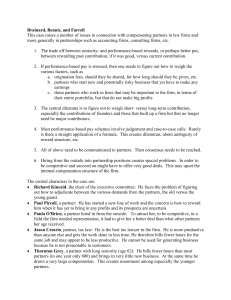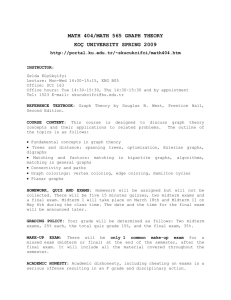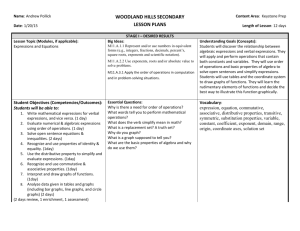ESP Assessment: Business Management Materials & Students
advertisement
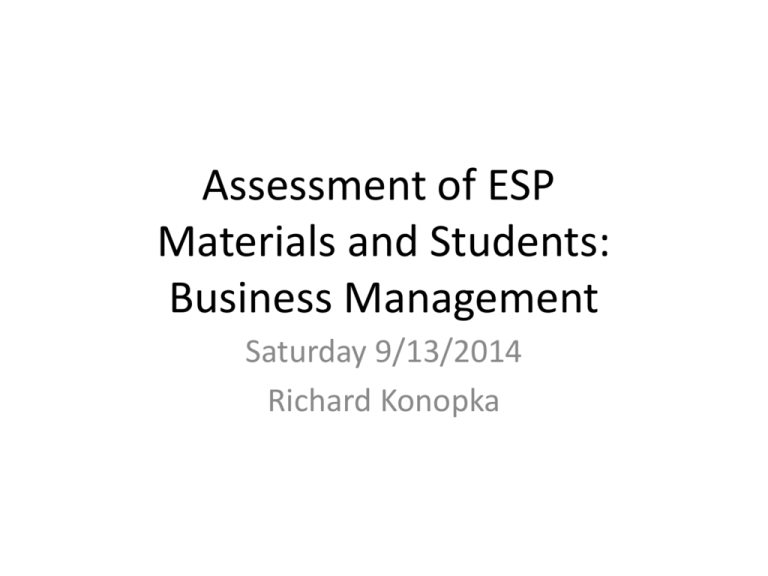
Assessment of ESP Materials and Students: Business Management Saturday 9/13/2014 Richard Konopka Purpose • Empirical methods of determining appropriate class content for students on a collective basis and individual basis. – Performance-based and portfolio • Make adjustments to class content. – Feedback and feedforward Language Business Management • Vocabulary and terms: GDP; SWOT analysis; niche market … • Graphs • Presentations • Tasks and writing Assessment • Feedback – Defined as that which individuals provide in response; i.e. cause creates effect. – Some examples: tests; presentations; collected classwork; … • Feedforward – Defined as that which individuals provide in implicit or perceived request; i.e. effect creates the cause. – Some examples: Student-sourced data; peer review; conversation … Authentic • Similar features to other structured class pedagogy yet emphasis is on giving a clearer picture to the student of their skills and progress. • Informal assessment – Systematic and frequent appraisal – Identify specific problems with specific students – Flexible • Constant modification • Performance-based assessment and portfolio assessment Performance-based Assessments • Classroom instruction – – Task, page 190 – Analyze the bicycle market using the three ‘C’ model, (Corporation, Consumer, Competition), Establishing a Niche Market Student Task Answer Performance-based Assessments (continued) • Test review – Midterm questions Brief video of me explaining an answer to the class. Midterm Graph Question What approximate time frame do the graphs cover? Midterm Graph Question Based on the graphs, briefly explain what you think the difference is between “gross debt and “public debt”. Portfolio Assessments • Individual student presentation 7 – 10 minutes SWOT Analysis Performance-based Assessments (continued) • Homework – – Task, page 152 – Describe a new technology and show how useful it would be for business. Student Homework Answer • “I think iPad is the most efficient tool for ‘mobile offices’ in this era. iPad is just like a laptop, they both can surf the internet, “… • “Employees a. Calculator: As KPMG employees, they always have to deal with accounting stuff, so a calculator is the ‘must have item’ to them.” • “Now you may ask, if iPad was that great, why not every company let their employees has a …” Something To Think About • In addition to being positive in your responses to students, try to be open to new interpretations or irregular answers. Student responses made in their own words need to be interpreted carefully or adjusted so the class or group can understand them. Something More To Think About • English language instructors are also language learners; even for native speakers. • This point of view can help one to see the shared experience of learning. • Challenge students with concepts that might gain a wide audience among your students. Many of the sources for presentation topics, test material, and lecture material come from IEEE Spectrum, The Economist, and Computer magazines. Conclusion • Finding the appropriate teaching level should be done dynamically so that students feel they are part of this process. • Focus on teaching methods that are inclusive and create a shared experience.
